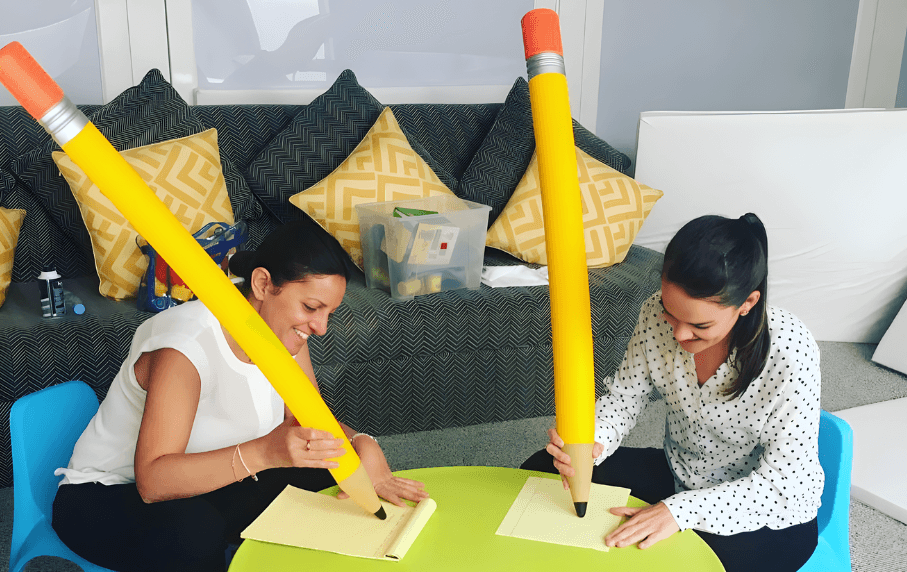
While US federal laws requires that accommodations be made to educate children with special needs in all public schools across the country, many other countries have followed the lead on this. When it comes to educating pre-school children the regulations are not as stringent and, when it comes to choosing a preschool for children with special needs, great care should be taken to ensure you find the right place for your child.
When I worked in Africa and the Middle East, at a time when we were establishing the guidelines for setting up early intervention programs and inclusion practices during the preschool years, we used the guidelines outlined by the Council for Exceptional Children (CEC) and the Division of Early Childhood (DEC). If you are reading this blog post and you are not living in the US and UK, please refer to the guidelines below to help you in both choosing an appropriate placement for your child, as well as knowing what to expect, and what to ask for to ensure your child is appropriately accessing the necessary educational and therapeutic services.
In 1990, the US created the Individuals with Disabilities Education Act (IDEA), a special education law that mandates regulation for students with disabilities in order to protect their rights as students and the rights of their parents. The primary goal of IDEA is to provide children with disabilities the same opportunity for education as those who do not have a disability.
An important aspect of the legislation is to provide children with special needs an education in what is known as the Least Restrictive Environment (LRE) that can be created. LRE is most commonly interpreted to mean: 1) in the neighborhood school, if possible, or in one as close to it as possible, and 2) in a general education class-room (sometimes called a mainstream or inclusion class), if possible; creating at least some opportunity to interact with typically developing peers (see Chapter 4 of my book, Let’s Talk).
When it comes to placement within the parameters of LRE, it is most often determined by: 1) a child’s ability to participate in and benefit from the general curriculum, and 2) the child’s own safety, and that of others, when functioning in a typical classroom environment. In the US, an Individual Education Plan (IEP), a document designed to set additional parameters, will specify the type of preschool setting that the parents and educational team both agree is most appropriate for the child. In the UK a similar document that specifies placement, services, and learning objectives is referred to as an Education Health Care Plan (EHCP).
An IEP defines the individualized objectives of a child who has been determined to have a disability or requires specialized accommodation, as defined by federal regulations. The IEP is intended to help children reach educational goals more easily than they otherwise would; while being tailored to the individual student’s needs, as identified by the IEP evaluation process.
With all of this in mind, barriers for preschool children to participate in a regular class are more relaxed than at the grade school level. A significant portion of the preschool curriculum focuses on play, communication, and social interaction, which benefit all children in a preschool classroom, both with and without disabilities.
Preschoolers with special needs will usually have a range of options in the classroom, as long as they and their classmates are safe and comfortable in the shared classroom environment (i.e., children do not exhibit behaviors that would make the setting dangerous). Several kinds of programs may be offered to a child on the Autism Spectrum, depending on level of functioning.
Education for children ages 3-5 with special needs usually takes place in a pre-school classroom.
Your child may receive support from a wide variety of special education professionals, including: a special educator, a paraprofessional (basically an educational aide), or special education teacher, as part of their placement. A paraprofessional may be assigned to either an individual child or to a classroom to provide the extra help needed. Therapists, including SLPs, OTs, and PTs, may work with your child in the preschool classroom, or in a separate area during the school day.
Here, each child with special needs will have been given an IEP and, based on that evaluation, the individual curriculum will target specific goals shared among the students with special needs. IEP targets that are less common may be taught to individuals or small groups by therapists; these targets will be practiced in activities provided by the aides and overseen by the therapists.
The primary teacher for this class is likely to be a special educator, although in some preschools, SLPs will take this role. The special education classroom will probably have several aides to assist the teacher, and therapists will visit to work with individuals or small groups inside or outside the classroom. Aides or therapists may accompany children when they visit their peers’ classrooms to coach interactions and reinforce play and social skills targeted in each of their IEPs.
While the goal of this blog post is to help you find and choose a preschool for children with special needs that will be best for your child, you should keep in mind that the models described above will likely continue to be necessary as your child grows older and moves into “regular” school. At all levels, the goal is to include and socialize your child throughout their ongoing education.
Needless to say, there is a great deal more to share about choosing the best school for your special needs child, at every level of education. If you would like to learn more, feel free to refer to Chapters 4 & 5 of my book, Let’s Talk.